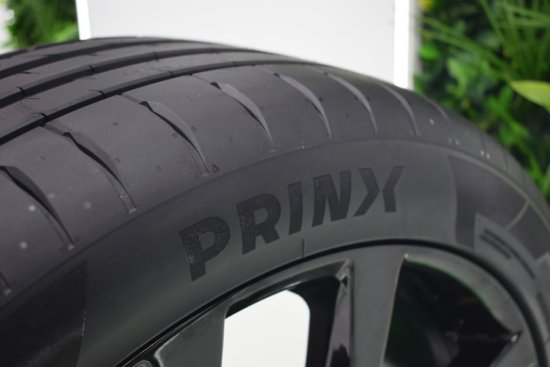Prinx Chengshan outlines emission reduction goals
 Prinx Chengshan aims to reduce the amount of coal burned when making its tyres (Photo: Tyrepress / Stephen Goodchild)
Prinx Chengshan aims to reduce the amount of coal burned when making its tyres (Photo: Tyrepress / Stephen Goodchild)
The tyre industry has long been considered a high-energy consumption industry, and manufacturers based in China have therefore been profoundly impacted by their government’s carbon neutrality and carbon peaking policies. Prinx Chengshan comments that Shandong Province, where its factory in China is located, frequently issues guidance to aid qualitative development within the tyre industry.
Prinx Chengshan’s 2022 Environmental, Social and Governance Report (ESG Report) sheds light on the tyre maker’s progress in the areas of sustainability and energy conservation. The company set three long-term emission reduction goals in 2021:
• A 15 per cent reduction in carbon emissions generated through tyre production (including retreading) by 2030, compared with 2020;
• Increasing solar power generation by more than three times by 2025, compared with 2020
• Raising the proportion of low rolling resistance commercial vehicle tyres in its portfolio to 45 per cent by 2025, and to 50 per cent for passenger vehicle tyres.
To achieve its energy and emissions goals, in recent years Prinx Chengshan’s factories in China and Thailand have installed photovoltaic power generation equipment. Prinx Chengshan adopted a series of measures to save energy and reduce emissions during the course of last year, including adding a flue gas collection and treatment system and upgrading the Shandong factory’s production line.
All fired up to make tyres
At present, Prinx Chengshan’s Shandong plant uses up to 226 kilogrammes of standard coal to produce on tonne of semi-steel radial tyres. It aims to reduce this to 219 kilogrammes by 2030; by this date, Prinx Chengshan aims to use no more than 168 kilogrammes of standard coal to produce a tonne of all-steel radial tyres.
Energy consumption in the Thailand factory is higher. By 2030 Prinx Chengshan aims require no more than 234 kilogrammes of standard coals to produce a tonne of semi-steel radial tyres, and 191 kilogrammes to produce a tonne of all-steel radials. The ESG Report does not explain why more coal is needed to make tyres in Thailand.
These figures may seem high to those of us based in the UK and Europe – and Prinx Chengshan is well aware that issues may arise in future. The ESG Report refers to energy conservation and emission reduction when identifying potential future risks, stating: “The tightening of climate-related policies such as the establishment of carbon tariffs in countries or regions where the Group’s production or markets are located may increase the cost of fulfilling such requirements. It might also raise the operating costs, insurance costs and penalties for noncompliance”.


Comments